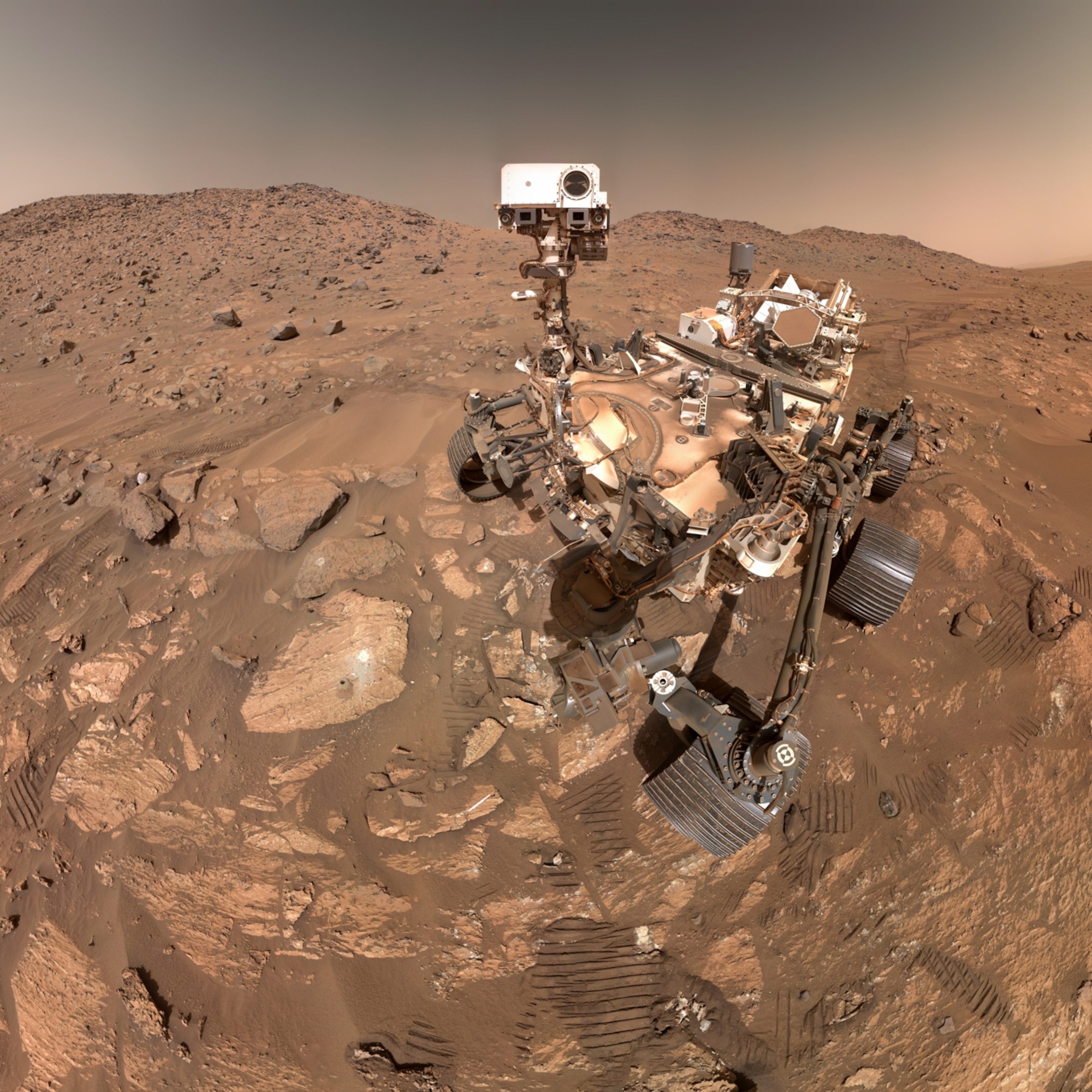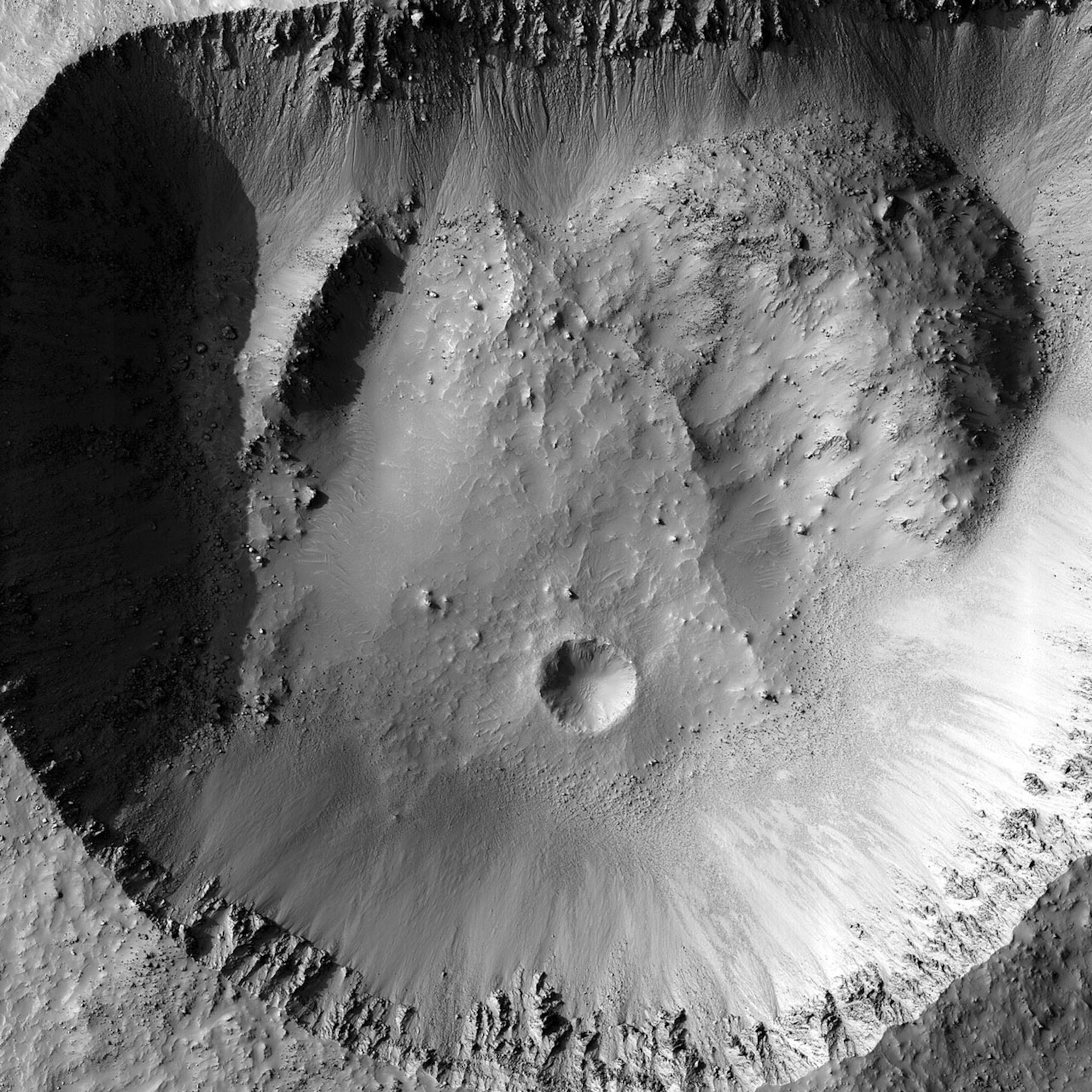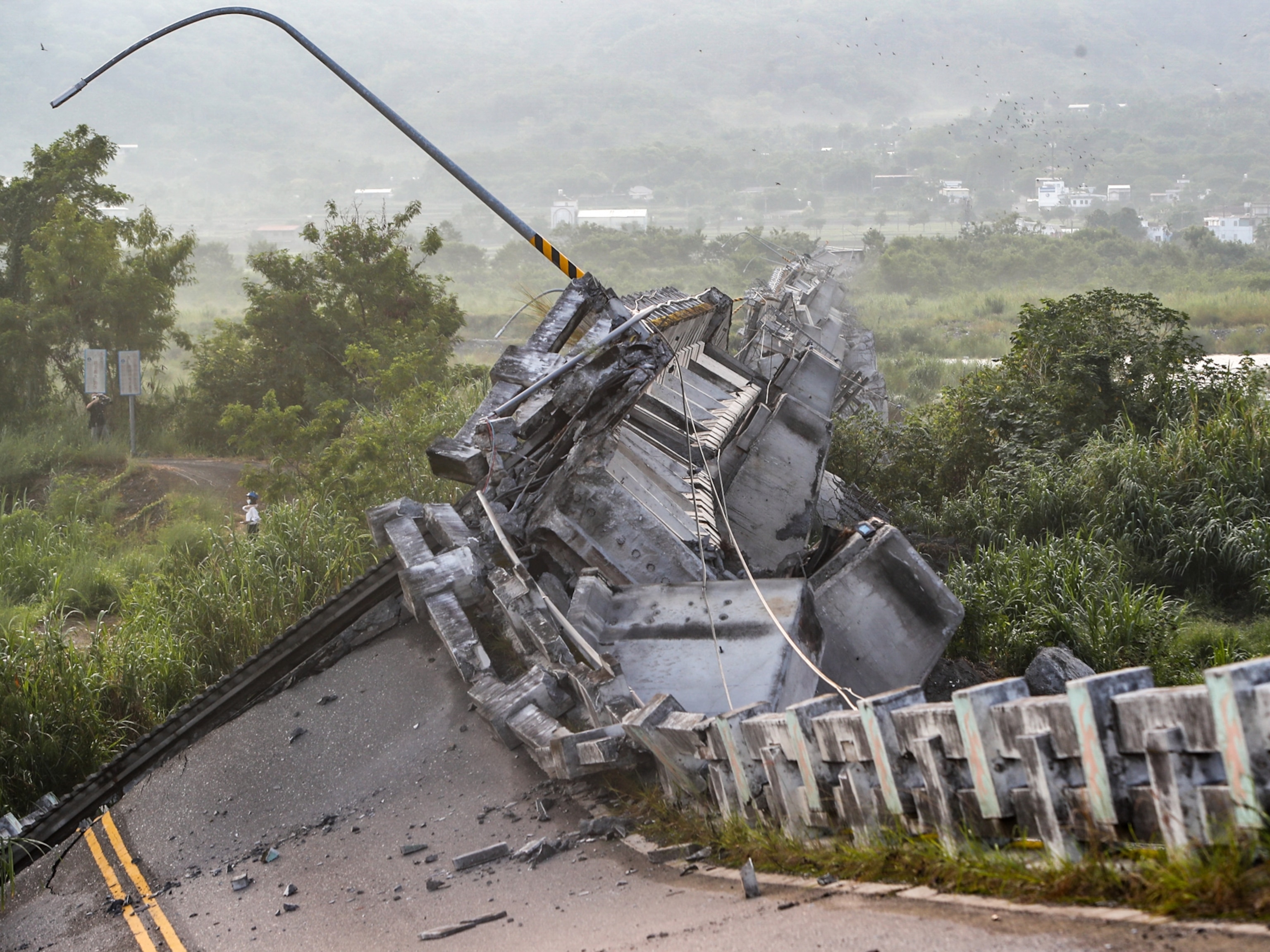Millions of miles away, a robot geologist stands alone on the dusty surface of Mars, listening for faint seismic echoes in the ground below. Its finger on the red planet’s pulse is sensitive enough to pick up the whoosh of wind, the drone of dust devils, the creak of tectonic cracks, and many other rumbles ricocheting though the planet’s insides.
While most of these signals have been indistinct murmurs, two have stood out loud and clear, allowing scientists to trace them back to their source: the first active fault zone yet found on the red planet.
Known as marsquakes, the events clocked in between magnitude 3 and 4, according to data from NASA’s InSight lander presented at a recent American Geophysical Union conference. While the two quakes are small by Earth standards, they’re among the largest yet detected on Mars. Scientists were able to trace both quakes to an area known as Cerberus Fossae, a series of deep gashes that lingers some 994 miles to the east of InSight’s landing zone.
The results from this work are pending publication in a peer-reviewed journal, and scientists associated with the InSight team declined to comment until after the study’s release. But the announcement of this active fault zone millions of miles away already has earthbound scientists abuzz. (Find out how Mars experts are also investigating mysterious magnetic pulses felt by InSight.)
“All the expectations we have and all the models we have to try to explain how active Mars might be can now be benchmarked against this measurement,” says Paul Byrne, a planetary geologist at North Carolina State University who is not part of the InSight team. “Mars has just become a bit more alive to us with these data.”
It’s unclear if or how this find might influence decisions for future human settlements on the red planet. The activity could point to a potentially useful source of geothermal energy on Mars, while the seismic shaking—which would feel akin to a big truck rumbling by—might pose an issue for sensitive scientific instrumentation, says Tanya Harrison, a planetary scientist specializing in Mars who is currently the manager of science programs at the satellite company Planet Federal. Overall, however, other perils likely pose greater risk for future Mars adventurers, Byrne notes.
More immediately, the marsquakes are a promising sign for what’s still to come from the InSight mission, which aims to untangle Mars’ current tectonic activity, as well as use the tiny trembles to map out the planet’s interior, similar to how an ultrasound can peer inside our bodies.
“It’s a huge deal for Mars science,” Harrison says. “It’s totally mind blowing.”
Geologic gashes
The robotic emissary known as InSight landed on Mars in November 2018 carrying “the most sensitive seismometer we’ve ever put on a planet, as far as I know,” says Christine Houser, a global seismologist at the Earth-Life Science Institute at Tokyo Institute of Technology. It not only detects “every creak and moan in the crust,” she says, but also many changes in atmospheric conditions. A suite of accompanying detectors can measure atmospheric pressure, wind speed, temperature, and more, helping to tease out what’s a marsquake and what’s not.

While much of what InSight’s seismometer has heard so far is the roar of the wind, there are a few hours after sunset when the bluster quiets down and other signals emerge. InSight detected its first seismic rumble from the planet’s interior, rather than its noisy surface, on April 6, 2019. (Learn more about the first marsquake ever recorded on the red planet.)
Since that time, temblors have been happening with increasing frequency—with more than 300 yet detected. But more monitoring is necessary to figure out why.
Scientists are also unsure what mechanism is causing the various internal rumbles on Mars. On Earth, quakes frequently come from the never-ending movement of tectonic plates as they jockey for position. This geologic dance builds up stress in our planet’s crust that occasionally hits a breaking point. When this happens, the land can suddenly shift, sending out a jolt in the form of an earthquake. (Here’s what'll happen when plate tectonics grind to a halt.)
Mars, however, doesn’t have plate tectonics. After its formation, the planet was a searing mass of molten rock that eventually cooled to form a static crust around a rocky mantle, yet it’s unclear how hot the planet’s insides are today. While volcanoes once gushed lava at its surface, they have long since fallen silent. But scientists suspect that pockets of magma might still linger below, since its stationary crust may act like a lid on a steaming cup of coffee, retaining heat from the planet’s formation, Houser explains.
In that case, some marsquakes might be due to the rocky planet’s ongoing cooling and contraction. This compression could crack the surface in so-called thrust faults, in which one block of land is shoved atop another. Still others might come from magma or water squishing through the Martian subsurface.
Gurgling from below
What exactly is causing the latest activity at Cerberus Fossae is uncertain without more data from the InSight team, Byrne says, but the region’s history provides some clues.
Cerberus Fossae is thought to be among the youngest fault zones on the red planet, opening up as little as 10 million years ago or less. The geologic newness is evidenced by deep valleys that cleanly cut through the pockmarks of more ancient craters, with sharp, near-vertical walls that are not yet worn down by time. Hints of geologically recent activity also remain: Multiple boulders around the area seem to have been shaken from their original position, leaving behind trails in the Martian dust.
These deep gashes may have formed due to a rising blob of magma—perhaps tied to the towering, if dormant, volcanoes to the northwest—which forced the landscape to stretch and crack. Some of these breaks even seem to have once spouted their own vast sheets of molten rock.
“The detected seismic events might suggest that the crack formation is still ongoing,” Misha Kreslavsky, a planetary scientist at the University of California, Santa Cruz, who is not part of the InSight team, writes via email.
Other sections of the cracked surface lead to landscapes seemingly sculpted by the rush of floods, so it’s possible that some type of water gurgling below this region could alternatively be the cause of the quakes, Byrne speculates, though he also thinks magma is a plausible culprit.
No matter their source, though, the quakes offer exciting hints that Cerberus Fossae isn’t necessarily dead: “The history of that area is continuing to be written today,” Byrne says. “That’s just—wow.”









